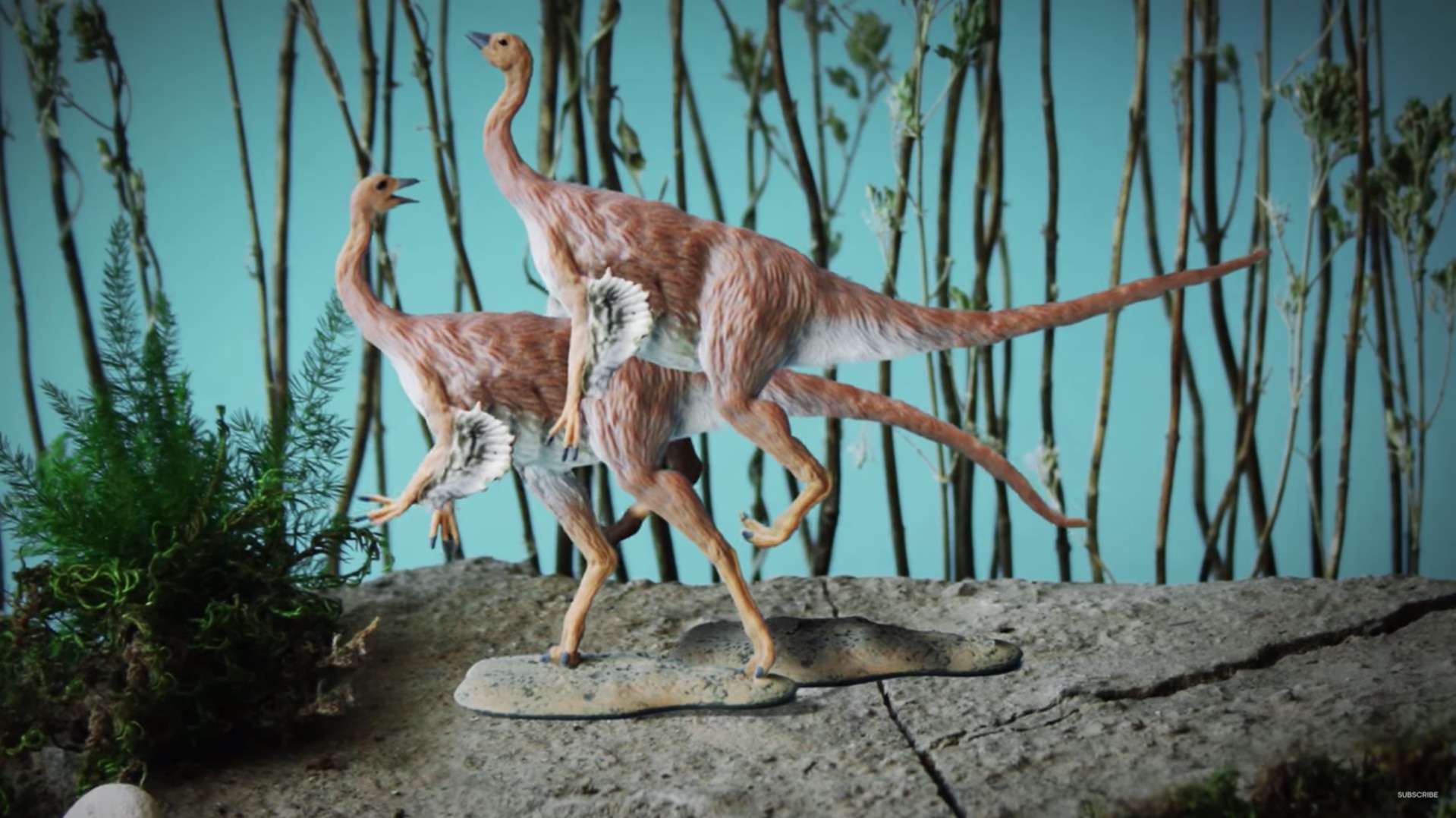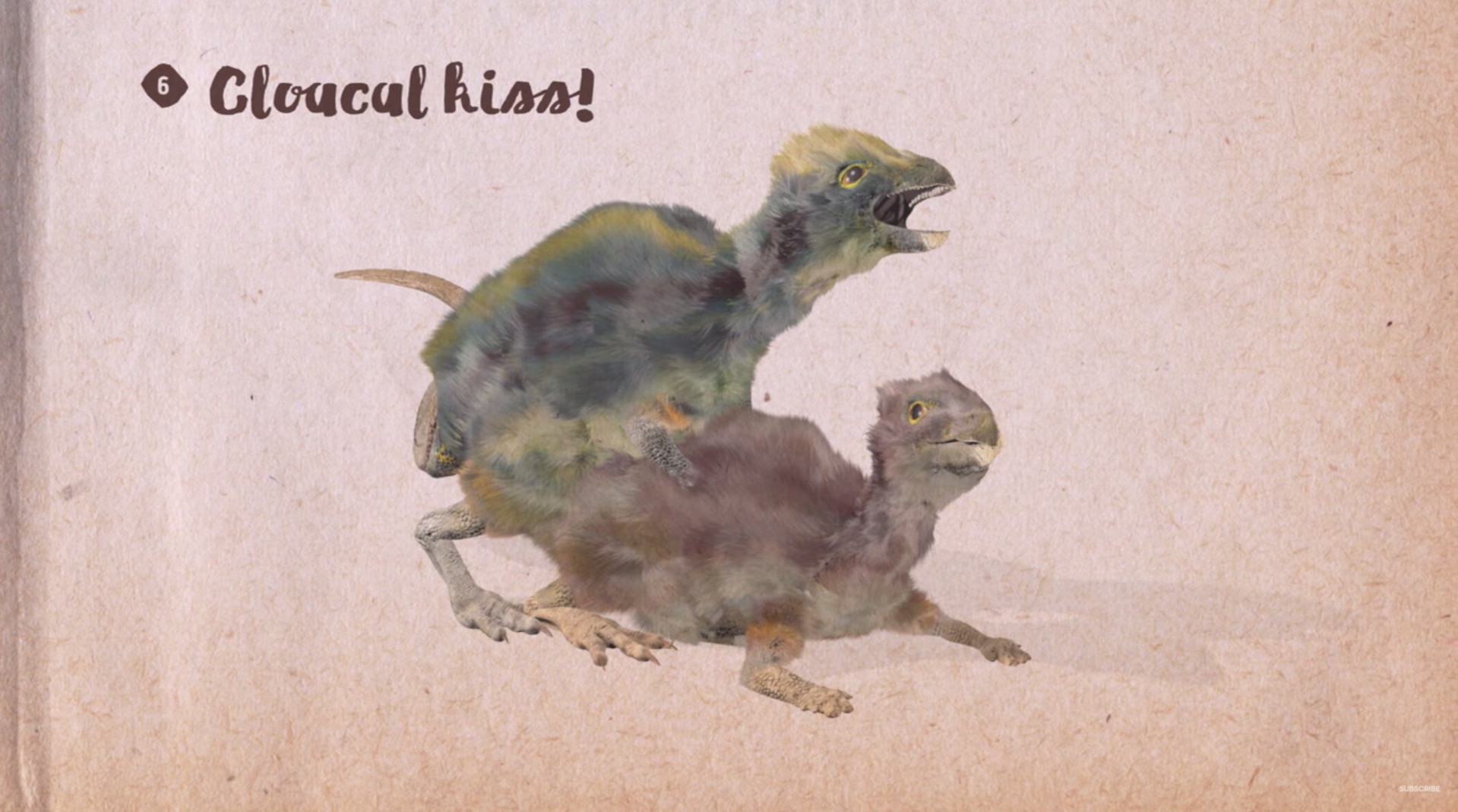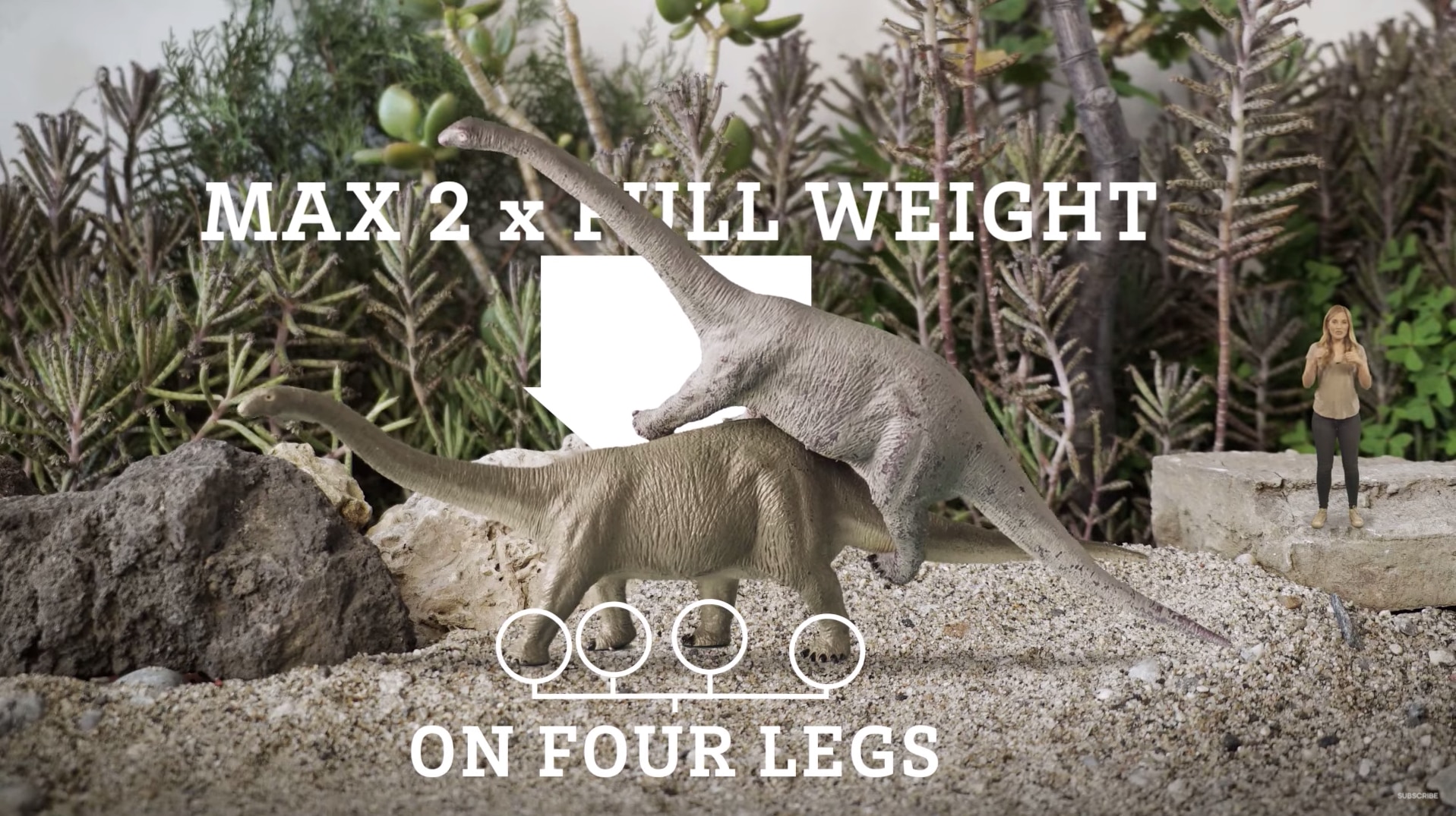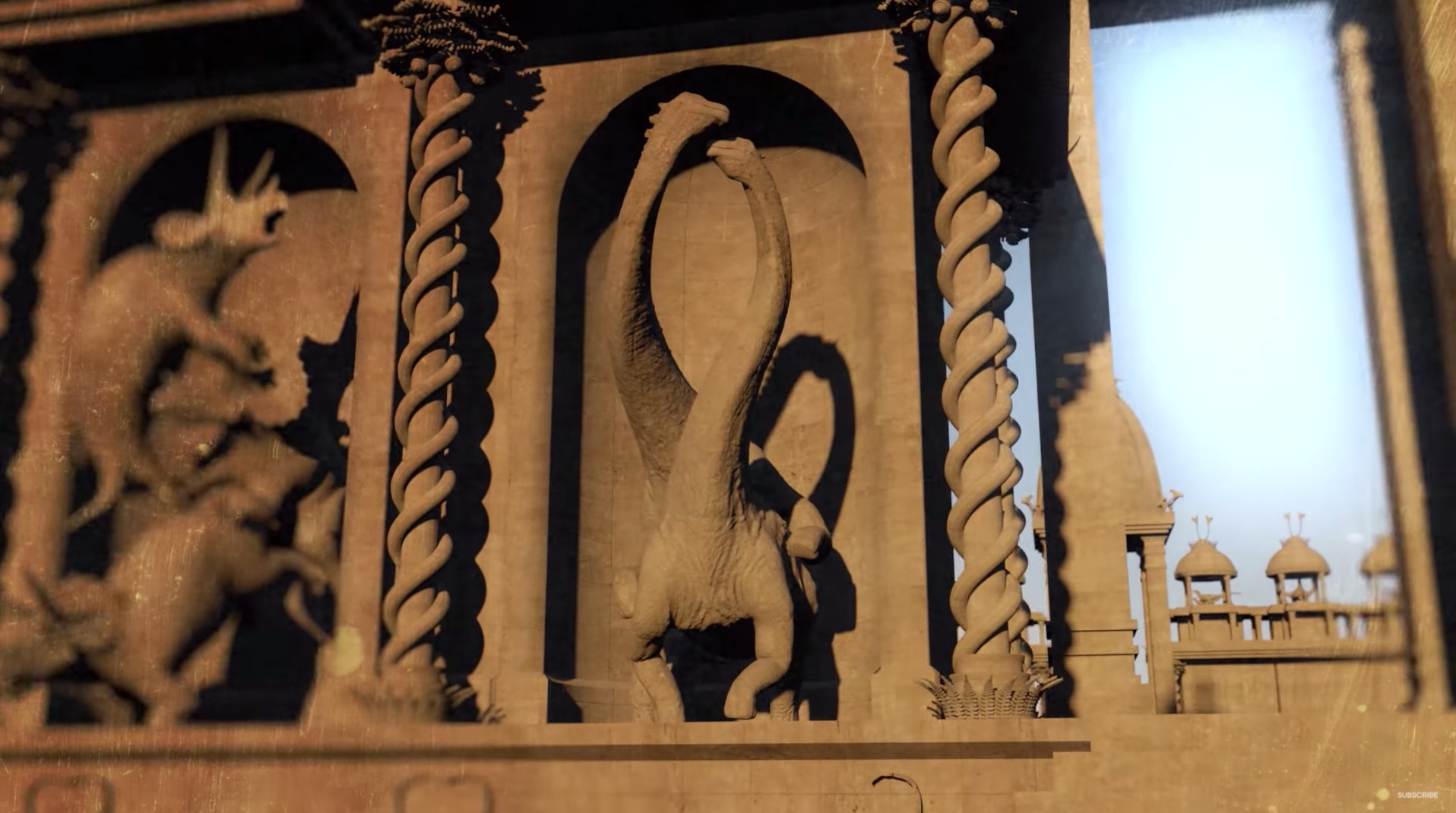BBC Earth newsletter
BBC Earth delivered direct to your inbox
Sign up to receive news, updates and exclusives from BBC Earth and related content from BBC Studios by email.
Animals
The question of dinosaur sex has perplexed palaeontologists for generations, with some pretty bizarre theories about dino-reproduction offered by experts.
Dinosaurs were on the planet for around 150 million years1 until an extinction event occurred approximately 66 million years ago.2 These beasts varied enormously in size and shape but, as they were around for so long, they were obviously pretty successful when it came to breeding. But how did they do it?

Many male and female dinosaurs were quite tricky to tell apart and appeared to be roughly the same size3, so it wasn’t a question of a smaller participant mounting a larger one or vice versa. It’s only in recent years that scientists have managed to identify a few female dinosaur specimens at all, via a study of medullary bones that reduce in mass when eggs are created within the body.4
There are no fossil records of any dinosaur reproductive organs, let alone a fossilised version of two ancient creatures caught in the act of copulation. Both male and female reproductive parts are formed of soft tissues which perish over time. But scientists have made a few educated guesses by looking at the close relatives of dinosaurs.

Birds and crocodiles reproduce using an organ called the cloaca, an all-purpose opening used for urination, defecation, and reproduction. Most birds breed via an act rather queasily known as the ‘cloacal kiss’ where sperm passes from the cloaca of the male bird into the cloaca of the female as they press together, which leads to fertilisation. So our dinosaur pals may well have used a very similar method and didn’t possess or need external genitalia at all.
But even using a cloaca to mate means that these prehistoric partners were required to get very up close and personal in order to smoosh their reproductive parts together. It’s likely that smaller dinosaurs (such as the Kulindadromeus) adopted a position as crocodiles tend to do, where the female crouches down, moves her tail to one side with the male clambering on top while twisting his underbelly allowing both cloacas to meet.5
Bipedal dinosaurs, traversing the planet on two legs, also had to deal with the problem of balance. Getting those important areas to line up would require a certain amount of coordination to stay upright. There’s a theory that the smaller, slightly comical, arms of the iconic T-Rex could have been used to latch onto the back of a mate. But they may have also simply sat down to do the business.6

But what about dinosaurs that are gargantuan in size? How did they get it on? It’s not the easiest thing to do if you happen to have an enormous muscular tail (such as the Diplodocus) located adjacent to all vital areas. This sizeable tale also contributes to their vast body weight of up to 80 tons. Wouldn’t one mate be crushed under the enormity of the other? One theory has this variety of dinos breeding in shallow water, for buoyancy. But slightly more pragmatic experts now think that if the creature could support their own body weight, they could probably manage a brief liaison with another beast. And as for the tail, it’s assumed the crocodilian method of flicking it to one side took place, with the male adopting an oblique or slanted stance to ensure copulation occurred.7

But what if your body just happens to be covered with potentially lethal spikes or spines (like the fearful-looking kentrosaurus) where any attempts at mating could lead to castration or death? Where body armour is involved, mating would certainly have been a very delicate operation. Scientists believe that the female kentrosaurus may have lay on her side with the male hovering over her or else a rear-to-rear manoeuvre occurred with the two mates facing in opposite directions with their rear ends touching.8 Not very romantic, but certainly practical.
But why did dinosaurs have these strange bodily appendages? Could they be connected to sex? Various theories for these additions have been made. Undoubtedly, having certain physical features for defence purposes makes a lot of sense, especially when dealing with a beast such as the multi-horned triceratops. Looking at the activities of our own animal kingdom may help to provide a few clues as to why so many dinosaurs were constructed in this way.

Some physical features may be connected to attracting a mate, or indeed to repel fellow suitors. For example, frills, horns and long necks could be utilised in courtship displays, similar to birds such as peacocks.9 The better the display, the more likely you are to land a mate. These appendages could also denote the health of a potential partner. The stronger the specimen, the more partners they are likely to attract.
These dinosaur adornments could also have been used for selection. Long-necked creatures such as the brachiosaurus could have engaged in neck-slapping battles with rival suitors (as giraffes do today). And horned beasts like the pachyrhinosaurus may have partaken in horn-on-horn skirmishes similar to those undertaken by rams and stags.10

Advanced study methods, more powerful computers allowing for detailed simulations and continuous fossil finds have provided masses of new information about dinosaurs and their bedroom activities. Computer-generated imagery of what dinosaur sex might have looked like can also help experts to analyse potential behaviours (some scientists may have too much time on their hands). But still many questions go unanswered.
Did male dinosaurs possess an external penis or take the cloaca route? And then there’s blood flow. How did the heart of these creatures manage to effectively transport blood to all the necessary areas?11 What sort of parents were they? Until a pair of dinosaur clones are created in some sort of Jurassic Park-type scenario (and we all know how well that worked out) we may never know.
Featured image © Mark Stevenson/Stocktrek Images I Getty
1. Dinosaur history, 2. Extinction event that wiped out dinosaurs, 3. Size of male and female dinosaurs, 4. Female dinosaur specimens, 5. Dinosaur mating technique, 6. T-Rex mating technique, 7. Positioning of the tail during mating theory, 8. Female kentrosaurus mating techniques, 9. Dinosaur courtship displays, 10. Pachyrhinosaurus horn-on-horn skirmishes, 11. Blood transportation of dinosaurs